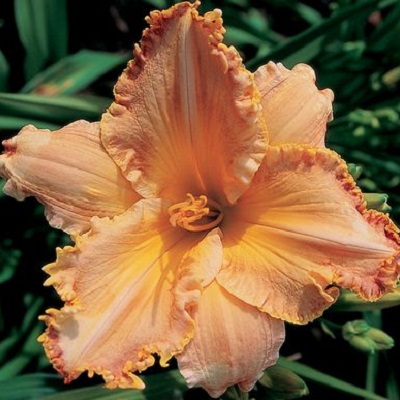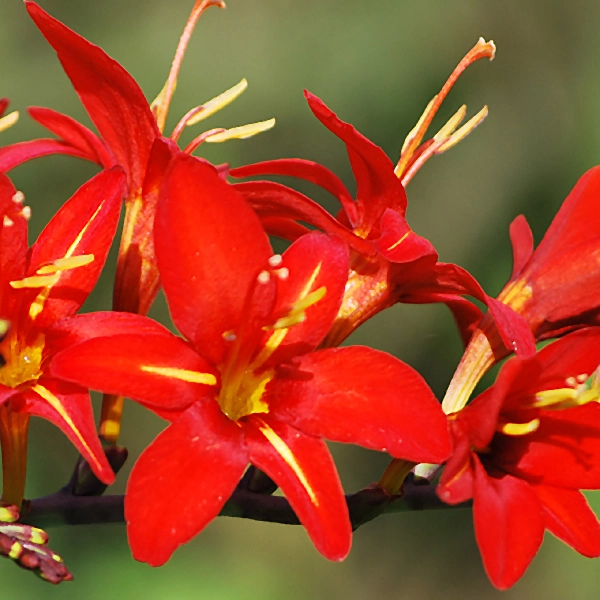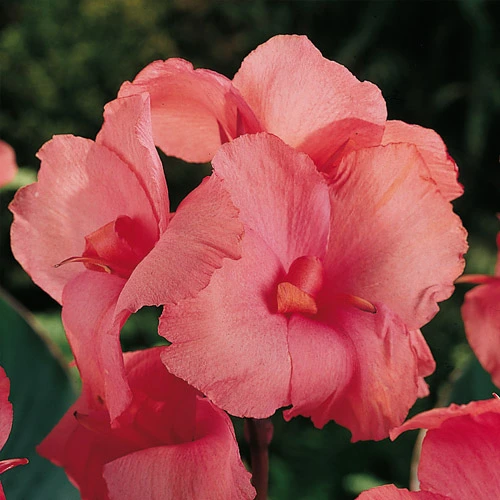Lilies - Bulbs
Where to plant–Lily Bulbs like well-drained soils in full sun. Although full sun until mid-afternoon is optimal, lilies will perform quite acceptably with filtered sunlight or partial shade. Lilies planted the shade will tend to reach for the sun and may require staking for support. Avoid planting near walks or walls that reflect the hot afternoon sun.
When to plant– Lilies are partially dormant at the time of shipment. Plant them right away. Bulbs can be stored in the refrigerator or other cool places (34 to 40° F) until planting. Unlike other bulbs, lilies are never completely dormant and should be planted as soon as possible after receipt. Sprouting should occur in just a few weeks and glorious flowers within months.
How to Plant– Cover the nose of the bulb with 3 to 5 inches of soil. This allows for good stem rooting and protects against winter cold. Plant pointed end up. Lilies like cool roots. Planting with shallow rooted ground covers or among other perennials helps shade the soil and looks nice. Lilies are extremely hardy, but in the coldest areas a mulch of straw or pine needles provides added insurance against winter injury. Mulches also keep the soil moist and cool in summer.
Fertilizers– A handful of bone meal mixed in the soil at planting, gives the bulbs a good start. Lilies benefit from a feeding in the early spring and prior to their active growth. Use a balanced mix such as 10-10-10, or a plant food developed for bulbs. Avoid heavy feeding with high nitrogen fertilizers as it makes them susceptible to disease and can cause the foliage to burn. Do not use manure!

Falling Stars - (Crocosmia) - Corms
Where to plant–Falling stars like well-drained soil in full sun. Perfect for containers or patio gardens! They add an element of surprise in the garden when in bloom because of their unique and exotic flowers. They make an excellent cut flower as well.
When to plant– Falling Stars are dormant at the time of shipment. Plant them right away. Corms can be kept in their bag and stored in a cool, dark and dry place until planting. Crocosmia often takes a year or two to get established. Once it has settled in, it will become a robust plant that gets larger each year.
How to Plant– If planting in containers, plant 2-3 inches deep, but no deeper than 1/3 the depth of the container. If planting in the ground place 3-9 inches below soil line. Plant with the pointy part of the corm up. Use a well-drained potting media. Drainage does not have to be perfect; when vigorously growing they like moisture and a little moisture retention by the media is not bad. They do not like to sit in saturated soils. Drought tolerant once established. They start actively growing when the days are 65-75° F and nights are 60° F.

Cannas- Rhizomes
Where to plant–Cannas love full sun and require a minimum of four hours direct sunlight. They are hardy in zones 7 through 11.
When to plant– Cannas can be planted any time after your last hard freeze.
How to Plant– Plant canna roots 12-18 inches apart, covering with two inches of soil. Place the long part of the root horizontally in the ground with the eye up, if visible. Plant in loose, fertile and well-drained soil. For customers living in zones 2 through 6, there are two ways to enjoy tropical cannas in your own garden; you can treat them as an annual and enjoy their beauty for a single season, or you can dig up the roots in the fall and replant them every spring.

Dahlias- Tubers
Where to plant–Dahlia Tubers might not look that pretty but their blooms are spectacular! Dahlias require full sun and prefer rich, well-drained soil. Perfect for sandy, loamy or acidic soils. Can be planted in containers, but will require staking. For taller varieties, (3 foot or more), we recommend staking when you plant as stems are rather brittle. Hardy to zones 8-11 but, with heavy mulching, some varieties can overwinter in the ground up to zone 6.
When to plant– Dahlia are dormant at the time of shipment. Plant them right away. Tubers can be stored in the refrigerator or other cool place but do not allow them to freeze. Sprouting should occur in just a few weeks. They should be planted in the spring to get a good rooting before the heat of summer kicks in, as they perform better in cooler temperature.
How to Plant– We suggest that you work the soil 8-10 inches deep, into a good loose condition. Incorporate into the hole a mixture of good garden soil and compost. Make a mound in the center of the hole, and place the plant on top of the mound spreading the tubers around the mound. The crown of the plant should be placed at ground level. Work the soil around the roots as you cover the plant. Be sure to pack the soil well. Water well. Dahlias require water every three to four days for the first two weeks and then at least an inch of water a week. If a tuber “finger” breaks off, don’t throw it away, replant it. Congratulations, you have a new plant. In the fall after the frost has blackened the foliage, you can dig and store the tubers until spring. If you live in zones 5 and colder, you need to store them so they survive the winter or treat them as an annual and plant new tubers the next spring.

